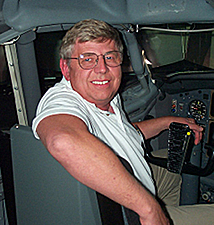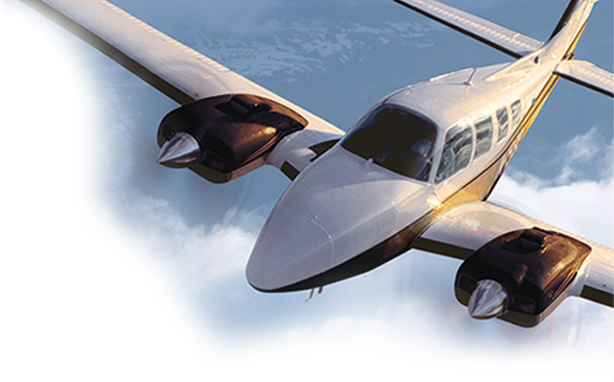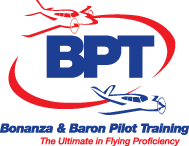
By Mick Kaufman
As pilots, we have all heard / seen references to the FAA terms crew resource management (CRM), single pilot resource management (SRM) and aeronautical decision-making (ADM). These are terms that we do not use everyday in aviation, but they become part of our vocabulary at check-ride time. I chose these topics for our first BPT newsletter because of their importance in our everyday flying –especially in instrument flying.
When I fly with an instrument pilot, I observe the way they use all of their resources and how they prioritize tasks. In some cases, it ends as part of the post-flight discussion or, if needed, I interject some comments during the flight. Many of us have heard the expressions “Aviate-Navigate-Communicate” and the “5 Ts,” both of which I will explain later in this article.
By definition, crew resource management or cockpit resource management (CRM) is a set of training procedures for use in environments where human error can have devastating effects. Used primarily for improving air safety, CRM focuses on interpersonal communication, leadership and decision-making in the cockpit of an aircraft. As GA pilots, we have to work harder to fly our aircraft because in most cases, we are single pilots and the workload is the same or higher and in some cases, our cockpits are not as sophisticated as the larger two-pilot crew aircraft. On the other hand, some of our GA aircraft have cockpits that would put most airline cockpits to shame, but the pilots never learn to use this modern equipment properly. So enter single-pilot resource management (SRM) which is an adaptation of crew resource management (CRM) training to single-pilot operations. We GA pilots need to develop flow patterns and use acronyms to get things done in a logical and systematic order.
In the beginning of this article, I mentioned “Aviate-Communicate-Navigate”. Recently during some flight training, I watched the pilot I was training get off course and deviate from his altitude while he fine-tuned the fuel flows on his engine analyzer. This was truly a case of not prioritizing tasks, and this is a very common
mistake that has developed with the adaption of sophisticated engine analyzers. As we move into the future, we will see more aircraft equipped with full-authority digital engine controls (FADEC) that set max engine performance. In the mean time, we need to set our priority on flying the airplane first. I do a very rough leaning and when the workload has reduced to almost zero, I fine tune fuel flows using my engine analyzer.
It is important to have a well-organized cockpit, which is one of the strong points of the new aircraft, and which has been designed to help the pilot with fuel flows. In the 1950s to the mid-1960s, aircraft manufacturers placed instruments wherever they fit. Then came what was known as the “T”-style panel, which developed an improved instrument scan.
My 1966 Piper Cherokee was a good example of a pre-T style panel that made the instrument scan a difficult task. The pilot does eventually adapt but transitioning to a different aircraft then becomes more difficult. We often question why the airlines do not update their equipment, and the answer is that they want to keep all the airplanes the same so a pilot can fly any Boeing 737-300 as they are all the same. All switches are in the same place and all of the avionics are identical. Not so in our GA aircraft except for the newer aircraft coming off the line. I never fly an aircraft in hard IFR until I become familiar with that specific aircraft. A Garmin 430 could have a different firmware update or a different interface to the CDI or autopilot than the last airplane I flew with the same equipment. Another case that may cause some confusion could be that the pilot who flew it previously changed some of the pilot option settings.
Besides knowing our aircraft and avionics well, there are other items we can do to enhance SRM. We need to enhance our personal organization of the cockpit by the way it is designed and place items there. With the advent of the i-Pad and the fantastic software known as Foreflight, we need to have the information in the pilot’s scan. When I see the iPad sitting on the pilot’s knee, I know this flight may prove to be interesting during a hand-flown approach. Before the i-Pad, I purchased a chart holder that was in my scan (FIG-1) as I knew getting pertinent information and looking down at my knee would set me up for an unusual attitude if I had to hand fly the aircraft. In another publication I write a column for I once wrote about getting and memorizing pertinent information from the approach chart and never looking at the chart once inside the final approach fix.
In my April/May column of Midwest Flyer Magazine, I wrote about copying and reading back clearances and how the brain is a computer with only a limited amount of processing power. I find that when there is too much information to process, the pilot gets into trouble. Several years ago, I was doing an instrument proficiency check with a pilot that had too much information. There was the usual Garmin 530 Navigator, a multi-function display (MFD), displaying a course overlay, a Garmin 796 with approach plate display, an i-Pad with Foreflight and, of course, Foreflight on the i-Phone. It was a disaster to watch the pilot push buttons on all of these devices and when two of the devices showed the aircraft in different locations, it was all over waiting for the crash, which would have occurred if we had been flying in hard IMC. We turned off everything, but the Garmin navigator displayed the approach chart on the MFD and de-cluttered the PFD to become an attitude indicator and HSI. This pilot learned a lesson and hand flew a perfect precision approach. Yes, you can have too many resources in SRM and not manage them well. We can also have too many resources available to us on a single box or navigator. A pilot needs to find what recourses are important to him and not just randomly push buttons and turn knobs. It is interesting as an instructor to watch pilots as they push buttons and twist knobs and when I ask what information they are looking to find, they do not have an answer. Pick one or two screens that represent the most useful information and then custom design the pilot changeable fields to provide what is important. A Garmin 530 has 5 user programmable fields on the right side of the display on the Nav 2 page. I use Waypoint, Desired Track, Track, Distance and Ground Speed. You may prefer different fields to display or may prefer the Nav 1 page as your primary display, which has 6 fields.
When it comes to checklists, I only use a written one on the ground and then only when not moving. This does not mean that I do not use in-flight checklists but not written ones as a single pilot. I use acronyms and flow patterns as I feel it is too risky to bury my head to read a checklist when it is necessary to have my eyes outside looking for traffic. We must accept the fact that there is no 100% electronic box that will alert you of a possible collision.
To get the greatest benefit from SRM, you also need a practical framework for application in day-to-day flying. One such approach involves regular evaluation of: Plan, Plane, Pilot, Passengers, and Programming. In this article, we have only scratched the surface on a few of these items, which I have found while instructing. You can use these items to evaluate your own shortcomings while flying. Since I began writing this article, I had a chance to fly with several pilots and saw one of them duplicate the button-pushing scenario I described above. It seems if there is a button to push or a knob to twist, we need to do it–a case of too much information available, and we have no idea what we are looking to find. Today, we have so many more resources available to us while flying that would have only been a dream some twenty-five years ago. We should use those resources to make better decisions before we fly and during the flight. This brings up another item to consider, and that is labeled “Aeronautical Decision-making” (ADM). There is no one right answer in aeronautical decision-making. Each pilot is expected to analyze each situation in light of experience level, personal minimums, and current physical and mental readiness level, and make his own decision. As a flight instructor, I find that we cannot teach good decision-making (my opinion), which may be argued by some. I do say, however, instructors can influence good decision-making to the pilots they fly with.
Reprinted from Midwest Flyer



